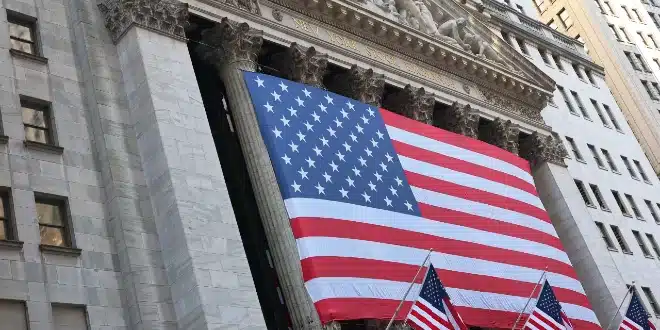Financial markets faced renewed turbulence on Friday, July 11, following former President Donald Trump’s aggressive trade rhetoric, including proposed new tariffs on key U.S. trading partners. The Dow Jones Industrial Average bore the brunt of the pressure, while cryptocurrency markets defied the trend with sharp gains, led by Bitcoin and a wave of altcoins.
Dow Dips, Tech Stays Steady, Crypto Outperforms
The Dow Jones fell 286 points, or 0.64%, in response to heightened trade tensions, signaling investor caution over potential global economic fallout. The S&P 500 also edged lower, slipping by 0.30%. Meanwhile, the Nasdaq Composite was more resilient, shedding just 0.08%, thanks in part to strength in the technology and cryptocurrency-related sectors.
Bitcoin (BTC) continued its remarkable run, notching a third consecutive all-time high at $118,856. The world’s leading digital asset gained 4% in just 24 hours. Ethereum (ETH) also climbed steadily, and altcoins like XRP, Dogecoin (DOGE), and Cardano (ADA) posted double-digit percentage gains, showcasing a stark contrast between traditional and digital asset classes.
The surge in crypto comes amid increasing investor interest in decentralized assets during times of political uncertainty, especially as digital assets are less vulnerable to direct geopolitical disruptions like tariffs.
Trump’s New Tariff Plan Targets Canada and Vietnam
Markets were rattled primarily by Trump’s unexpected announcement of a new 35% tariff on Canadian imports—an increase from the existing 25%. While the proposed tariffs exempt critical resources such as oil, gas, and potash, the broader move has stoked fears of retaliatory trade measures and renewed friction between the U.S. and one of its closest allies.
Canada remains one of the United States’ top trading partners, supplying vital energy commodities and raw materials. These are currently governed by the U.S.-Mexico-Canada Agreement (USMCA), which outlines tariff limits and exemptions. Trump’s proposal, therefore, raised questions about how such changes would comply with existing trade frameworks.
In a related development, Vietnam expressed surprise over Trump’s proposed 20% tariff on its exports. Bloomberg reports that Vietnamese officials are hoping to negotiate a lower rate, potentially between 10% and 15%. The Southeast Asian nation has grown into a critical supplier for the U.S. in recent years, stepping in to fill the void left by Chinese manufacturers amid earlier U.S.-China trade tensions.
Vietnam currently holds the third-largest trade surplus with the United States. Its exports of electronics, textiles, and footwear have made it a preferred trade partner, particularly given its geopolitical alignment with Washington. Previous U.S. administrations had viewed Vietnam’s growing role as a strategic counterbalance to China.


